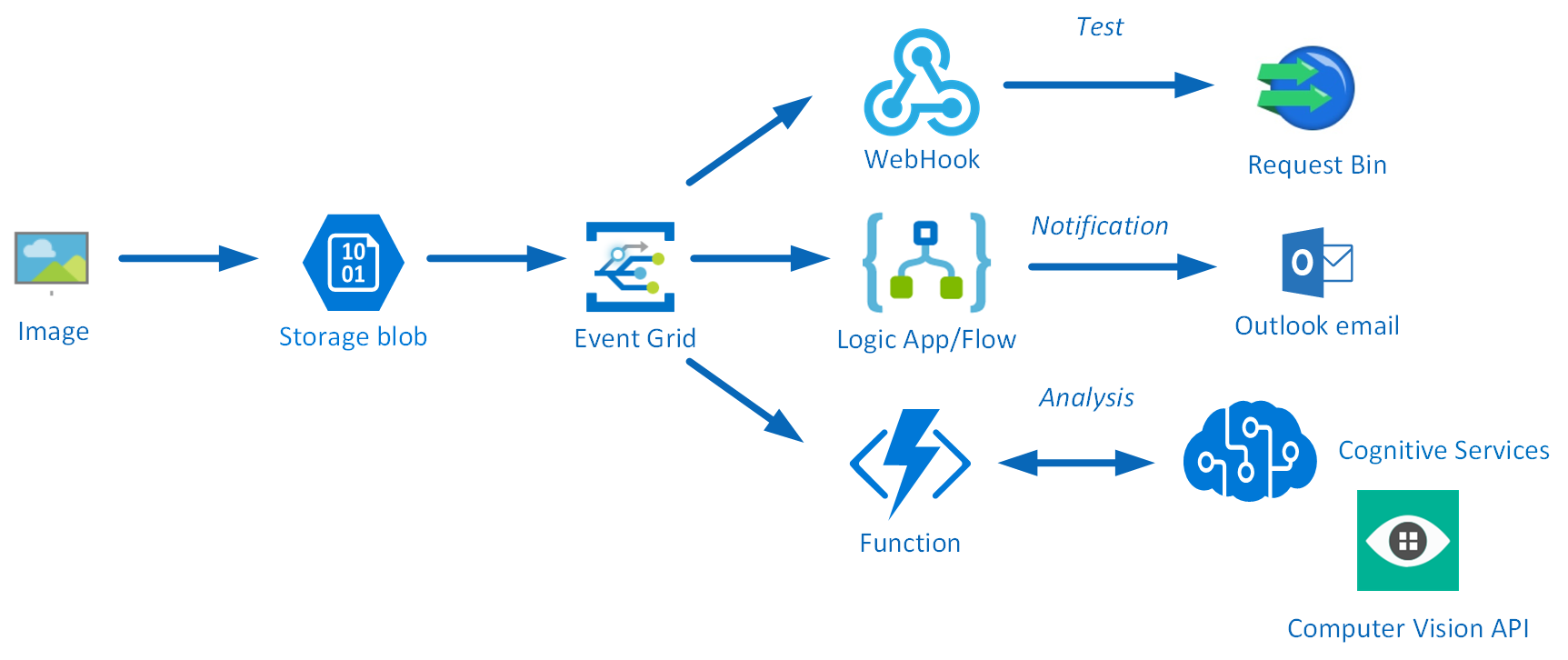Unleashing the Power of Azure Event Grid: A Symphony of Events in the Cloud
 Sumit Mondal
Sumit Mondal
In the ever-evolving landscape of cloud computing, Microsoft Azure stands tall as a pioneer, constantly pushing the boundaries of what's possible. One of its gems that often goes unnoticed but plays a pivotal role in orchestrating the digital symphony is Azure Event Grid. Join us on this journey as we unravel the magic behind Event Grid, exploring its capabilities, use cases, and even diving into a hands-on example that showcases its prowess.
Understanding Azure Event Grid
Azure Event Grid is a fully-managed event routing service that simplifies the development of event-driven applications. In essence, it acts as the central nervous system of the Azure cloud, enabling seamless communication and coordination between different services. At its core, Event Grid facilitates the exchange of events – lightweight notifications – between various Azure resources or custom applications in a decoupled, scalable, and reliable manner.
Key Features and Use Cases
1. Decoupled Architecture:
Event Grid allows components of a system to remain loosely connected, reducing dependencies and enhancing scalability. This decoupling is crucial for building modern, agile applications where changes in one component don't disrupt the entire system.
2. Extensive Event Support:
Event Grid supports a wide variety of events, ranging from Azure services events (e.g., blob storage events, IoT Hub messages) to custom events published by your applications. This flexibility ensures that virtually any change or interaction within your Azure environment can trigger an event.
3. Filtering and Routing:
With Event Grid, you're not overwhelmed with every event. Its advanced filtering capabilities enable you to define rules and conditions, ensuring that only relevant events are processed. This feature is particularly useful in scenarios where you want to react to specific changes in your system.
4. Built-in Retry Mechanism:
Failure is an inevitable part of distributed systems. Event Grid mitigates this by incorporating a built-in retry mechanism. If an event isn't successfully delivered, Event Grid will attempt to resend it, ensuring that critical events are not lost in transit.
5. Scalability and Reliability:
Event Grid is designed to handle massive amounts of events. Whether you're dealing with a handful of events or millions per second, Azure Event Grid scales effortlessly, ensuring reliable event delivery even under high loads.
Hands-On Example: A Real-World Scenario
Let's dive into a practical example to illustrate the power of Azure Event Grid. Consider a scenario where you have an Azure Blob Storage account, and you want to trigger an Azure Function whenever a new image is uploaded. Follow these steps to implement this scenario:
Step 1: Set Up Azure Blob Storage
Create a new Azure Blob Storage account if you don't have one. Upload a sample image to a container in the storage account.
Step 2: Create an Azure Function
Develop an Azure Function that will be triggered when a new blob is added to the storage container. The function can perform actions like resizing the image, extracting metadata, or any custom logic based on your needs.
Step 3: Configure Event Grid
In the Azure portal, navigate to your storage account and open the "Event Grid" section. Create a new subscription and configure it to listen to the "Blob Created" event for your specific container.
Step 4: Observe the Symphony
Now, when you upload a new image to the storage container, Azure Event Grid will emit an event, triggering your Azure Function. Witness the seamless orchestration as your function processes the event, demonstrating the power of Azure Event Grid in action.
Conclusion
Azure Event Grid empowers developers and organizations to build event-driven architectures that are resilient, scalable, and responsive to changes. Its versatility and seamless integration with various Azure services make it a valuable tool for orchestrating complex workflows and responding to events in real-time.
As we've seen in our hands-on example, the combination of Azure Blob Storage, Azure Function, and Azure Event Grid creates a powerful ecosystem where events seamlessly trigger actions, bringing a harmonious symphony to your cloud applications. Embrace the event-driven paradigm, and let Azure Event Grid be the conductor of your digital orchestra in the cloud.
Subscribe to my newsletter
Read articles from Sumit Mondal directly inside your inbox. Subscribe to the newsletter, and don't miss out.
Written by

Sumit Mondal
Sumit Mondal
Hello Hashnode Community! I'm Sumit Mondal, your friendly neighborhood DevOps Engineer on a mission to elevate the world of software development and operations! Join me on Hashnode, and let's code, deploy, and innovate our way to success! Together, we'll shape the future of DevOps one commit at a time. #DevOps #Automation #ContinuousDelivery #HashnodeHero